|
Vintage Cassette Tape Transports
This page of the site is largely irrelevant and is only left in place to show how the mechanisms worked. The first photos show two different types of mechanisms. The first is a relatively generic mechanism. It's in a Denon DCR-630. The second one is somewhat rare. It's in a Nakamichi TD-700. The third image is from a home cassette deck (Pioneer CT-F800).
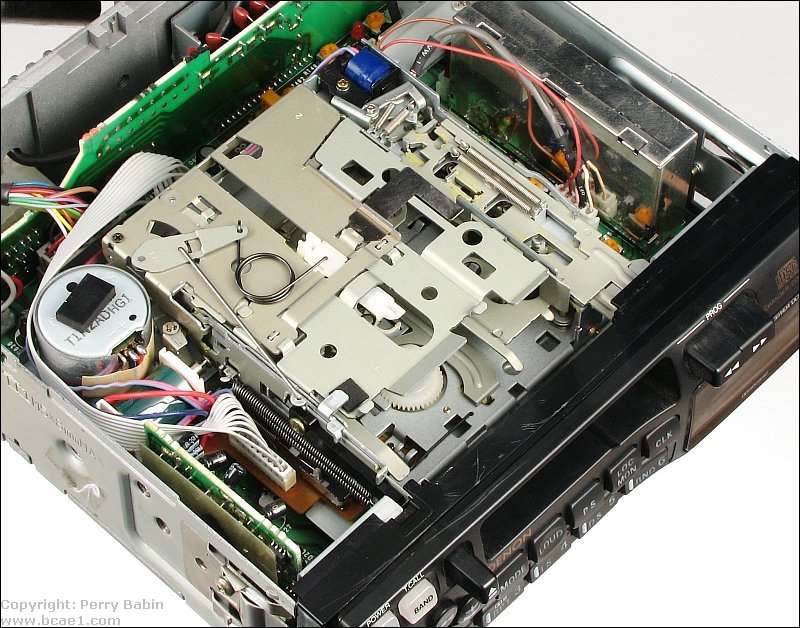
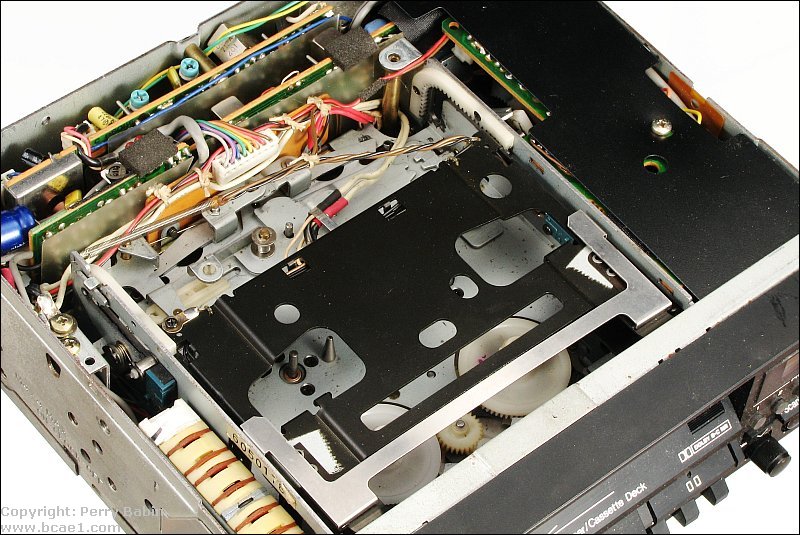
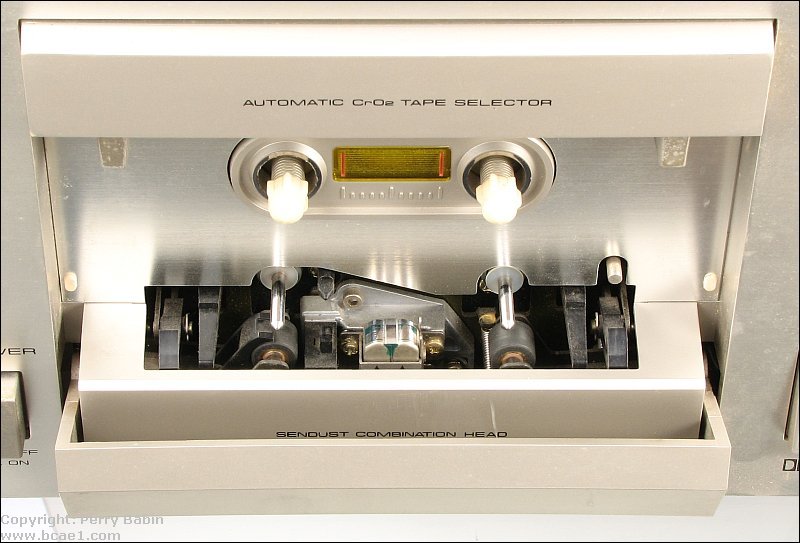
The purpose of a tape transport is to handle the cassette tape (load, unload, clamp in place while playing...) and to pull the tape across the tape heads at a precise, constant rate of speed. Most cassette tape players had tape heads (heads will be covered on an upcoming page) with two coils (one for each track (left and right). The cassette tapes had 4 tracks total. Two tracks played when the cassette was inserted with side A up. The other two tracks played when side B was up. In some cassette players, you had to remove the tape and flip it to play the other side. An 'auto reverse' tape transport could play both 'sides' of the cassette tape without manually removing the cassette. It does this by reversing the direction in which the tape is travelling. In some players, there were four coils and the head remained stationary when the direction was reversed. Others had a head that flipped over when the direction was reversed. At least a few old home cassette players had a mechanism to move the tape out, flip it and then replace it to play the other side (search youtube for RX-202, RX-303, RX-505).
The diagram below shows the parts of a typical transport.
The following is an example of a reel table. They varied greatly in design but this is approximately what they looked like. They were driven by a belt or by gears. Most of them had a felt-lined clutch that allowed slippage. It needed to slip because it turned faster than the hubs in the tape. It could never turn slower (on take-up) because if it did, the tape player would 'eat' the tape.
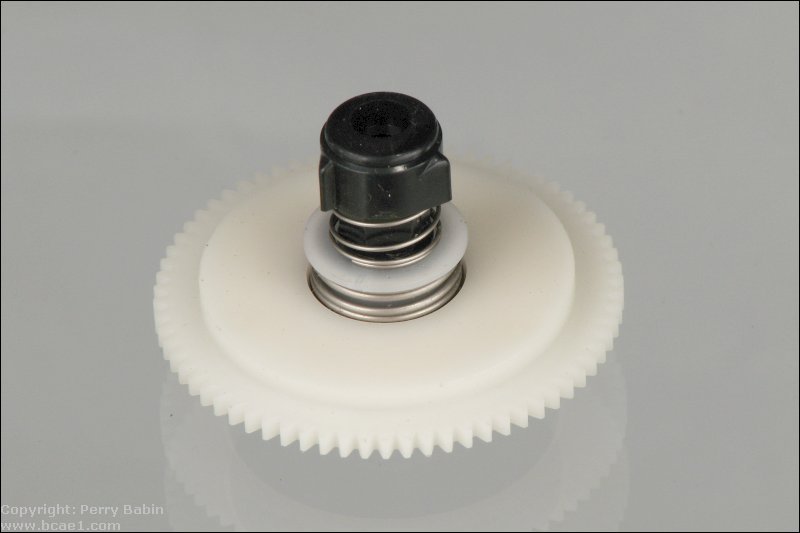
This is an example of a pinch roller. The roller pivoted on a shaft that went through the holes on the left. The pin on the right was used to push the pinch roller off of the tape.
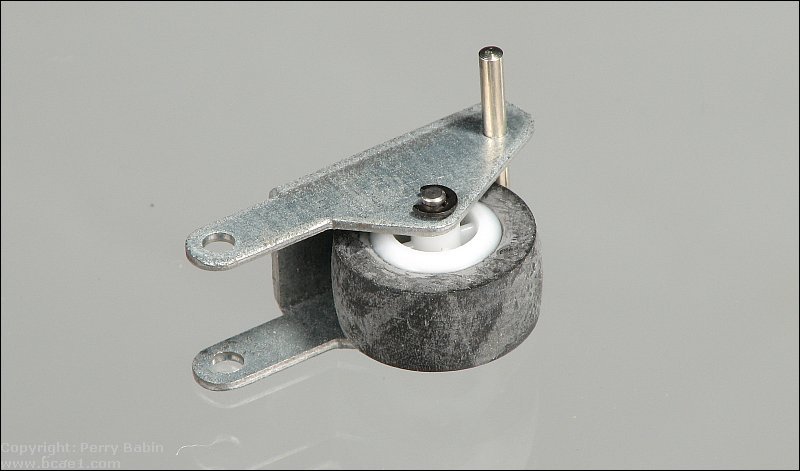
For a standard cassette tape, the tape moves at a rate of 1 7/8 inches/second. The tape is pulled across the tape 'head' when a 'pinch roller' pinches the tape between itself and the 'capstan'. The capstan is entirely responsible for the speed at which the tape travels. The take up reel spools the tape back onto the reel after it passes through the capstan and pinch roller. The take-up reels are driven through a clutch which allows some slippage. It can not be driven at a constant rate of speed because the diameter of the tape on the reel is constantly changing. When the direction of tape travel is reversed, the previously active pinch roller is pulled away from the capstan, allowing the tape to pass freely by the capstan. The pinch roller which was previously not active, is pushed against the capstan. The capstans rotate in opposite directions. The reel table which previously was just spinning free now becomes the 'takeup' reel and the other reel spins freely. The diagrams below show the operation for each direction of travel.
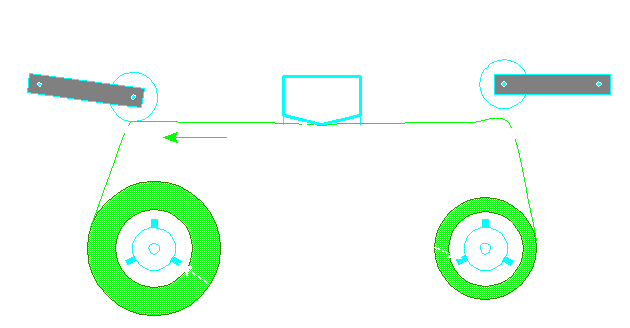
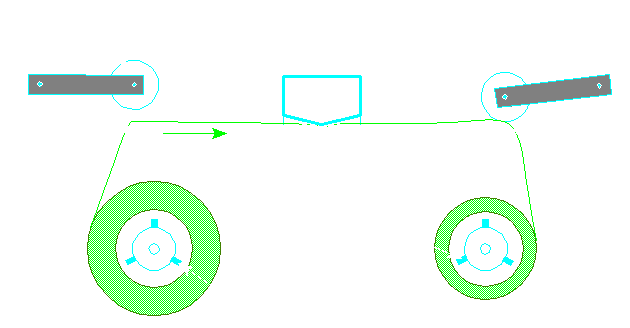
The following image changes from side 'a' to side 'b' when you move you mouse over the image. You can see that the direction changes. The reel tables switch between supply and take-up and the pinch rollers move against the capstan or off of the capstan (depending on direction).

You May Be Interested in My Other Sites
-
This site was started for pages/information that didn't fit well on my other sites. It includes topics from backing up computer files to small engine repair to 3D graphics software to basic information on diabetes.
-
This site introduces you to macro photography. Macro photography is nothing more than the photography of small objects. It can take quite a while to understand the limitations associated with this type of photography. Without help, people will struggle to get good images. Understanding what's possible and what's not possible makes the task much easier. If you need to photograph relatively small objects (6" in height/width down to a few thousandths of an inch), this site will help.
-
If you're interested in air rifles, this site will introduce you to the types of rifles available and many of the things you'll need to know to shoot accurately. It also touches on field target competition. There are links to some of the better sites and forums as well as a collection of interactive demos.
-
This site helps anyone new to computers and anyone with a basic understanding of computers with a desire to learn more about the internal components of a computer. If you have a computer that you'd like to upgrade but don't know where to start, this is a good site for you.
-
This site is for those who want to begin racing karts but don't fully understand how the various parts work. It's mostly interactive demos that show how the various parts of the kart work.
|




